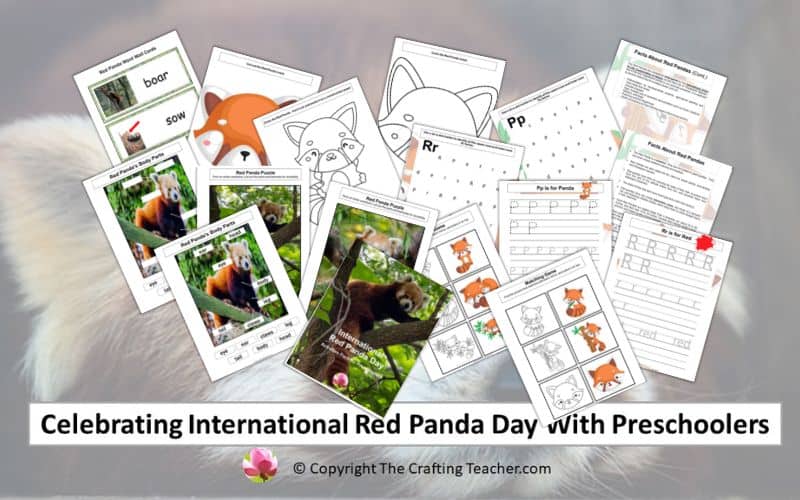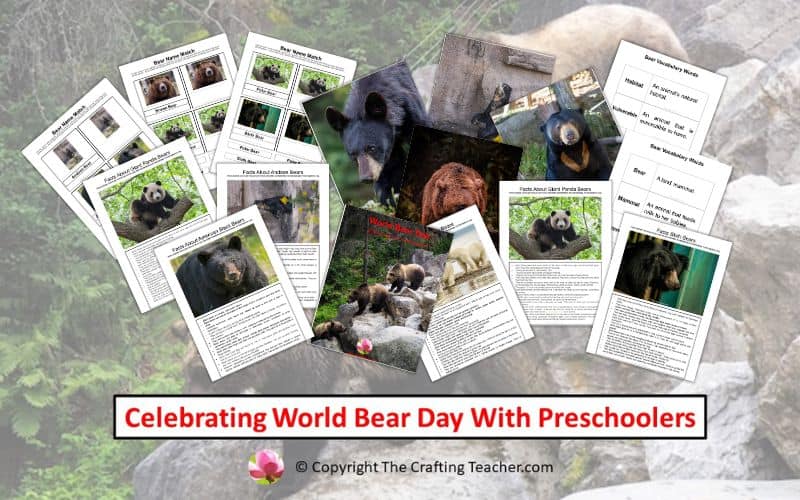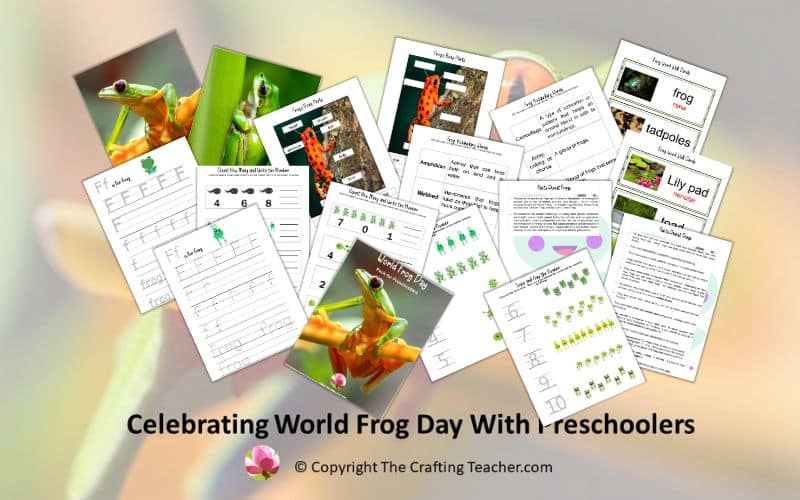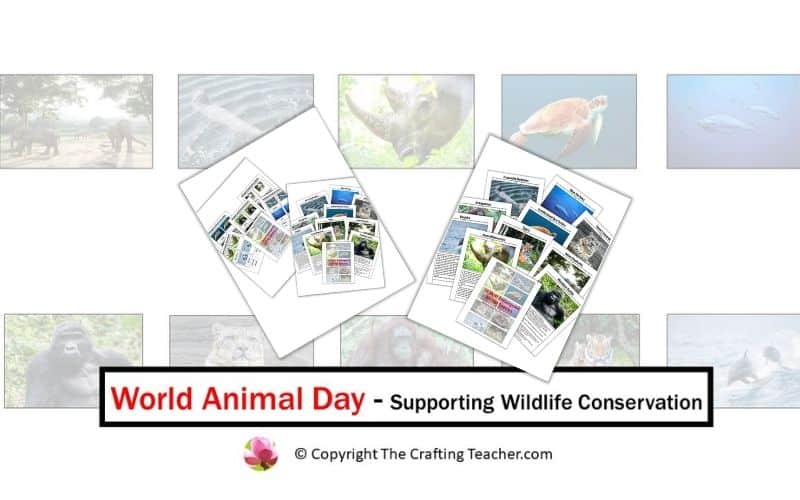Celebrating International Sloth Day with Preschoolers
International Sloth Day is celebrated every October 20th to raise awareness about the problems facing the world’s slowest-moving mammals and how to help them by supporting the organizations that protect them and their habitats.
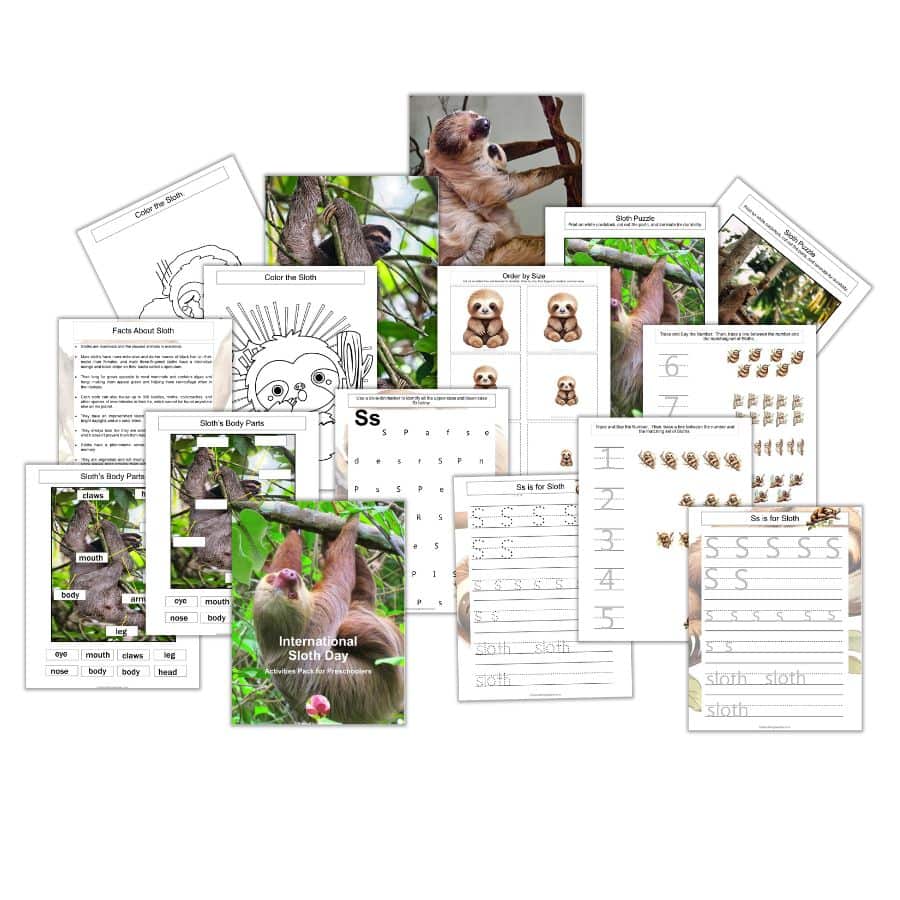
You will find a FREE International Sloth Day pack at the end of this post. It includes 23 pages of Literacy, Science, Math, and Fine Motor activities for your preschoolers.
History of International Sloth Day
International Sloth Day was created in 2010 by the AIUNAU Foundation, a non-profit organization that protects all wildlife in Colombia. The intention is to help people get to know these sweet animals and encourage their protection to prevent sloths from becoming extinct.
Members of this organization have been working with sloths since 1996 and have discovered that an incredible number of sloths are killed by cars, power lines, or captured every year. They work hard to rescue sloths and give them veterinarian care before they are released back into the wild.
Other organizations protecting the sloths are:
- The Sloth Conservation Foundation (SloCo) is a non-profit organization in Costa Rica that protects sloths in their natural habitats through research, reforestation, public education, road bridge construction, and community-based conservation.
- IUCN Xenarthan Specialist Group helped establish a “Committee for the Protection of the Pygmy Sloth” to oversee sloth research and conservation activities.
- Sloth Conservation and Wildlife Experience is a wildlife sanctuary in Costa Rica that cares for sloths and other animals.
- The Sloth Institute has developed projects to rescue, give medical attention, release sloths, and conduct research, conservation, and education programs to ensure their survival.
Facts About Sloths
- Sloths are mammals and the slowest animals in existence.
- Male sloths have more extensive and darker manes of black hair on their necks than females.
- Their long fur grows opposite to that of most mammals and contains algae and fungi, making them appear green and helping them camouflage themselves in the treetops.
- Each sloth’s fur can also house up to 950 beetles, moths, cockroaches, and other species of invertebrates, which is unique to the planet.
- They have an impoverished vision in dim light, are completely blind in bright daylight, and are color-blind.
- Due to their lack of facial muscles, they always look like they are smiling, but this doesn’t prevent them from having any other expression.
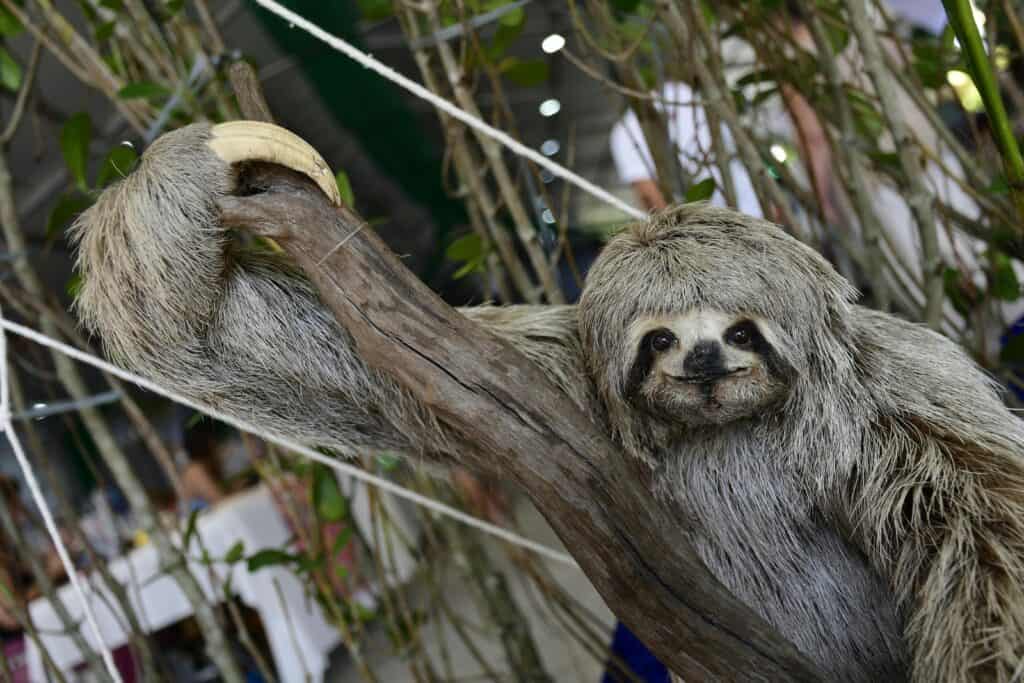
- Sloths have a phenomenal sense of smell and a tremendous spatial memory.
- They are vegetarians and eat primarily leaves but also shoots and fruit. Since leaves don’t provide enough energy, they need to sleep more and move slowly to save energy, sleeping for 15 to 20 hours each day.
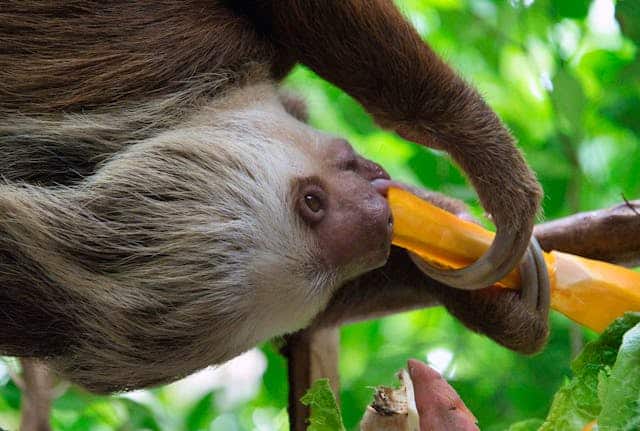
- Their metabolism is so slow that it can take almost a month to digest a single leaf. They only go to the bathroom once a week on the ground, digging a little hole at the base of a tree. They can also lose up to a third of their body weight each time.
- Their stomachs have four chambers and can act as a floatation device.
- Sloths cannot control their body temperature and rely entirely on environmental conditions. If they get too cold, the unique microbes in their stomachs can die, and the sloths won’t be able to digest the leaves they eat, potentially killing them.
- Sloths can fall over 100 feet from a tree without injury and do this at least once a week.
- They are extremely slow on land but are good swimmers, traveling three times faster in the water and holding their breath for up to 40 minutes.
- They have six neck vertebrae, two more than any other mammal, allowing them to turn their heads through 270° and quickly keep their nose above water when swimming.
- Sloths are three times stronger than humans and have been able to lift their entire body weight upwards with just one arm since birth. The specialized muscles in their hands and feet lock into place, allowing them to hang upside down from a branch for a long time, even sleeping, without wasting energy.
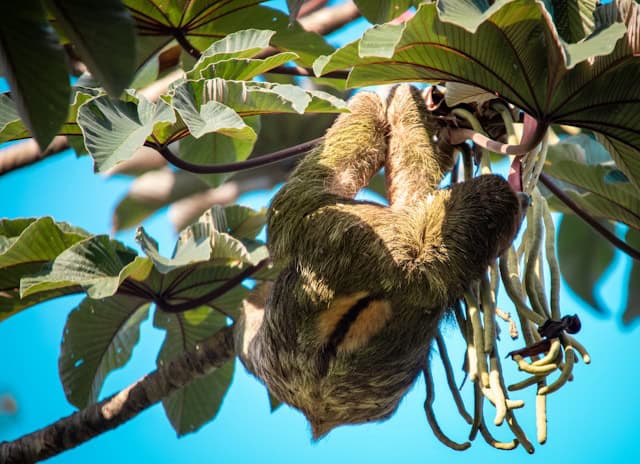
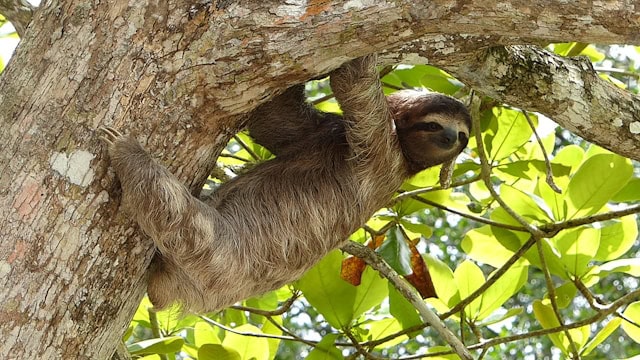
- Sloths are found in the rainforests of Central and South America.
- Mama sloths carry their babies for up to six months after birth.
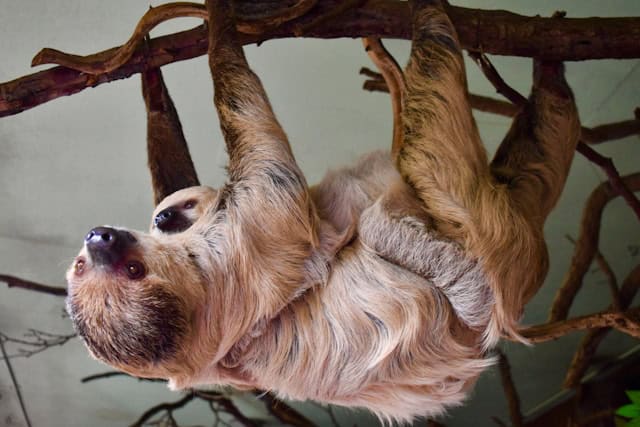
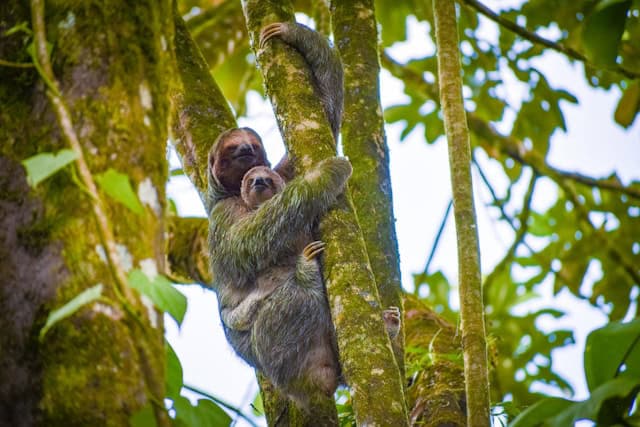
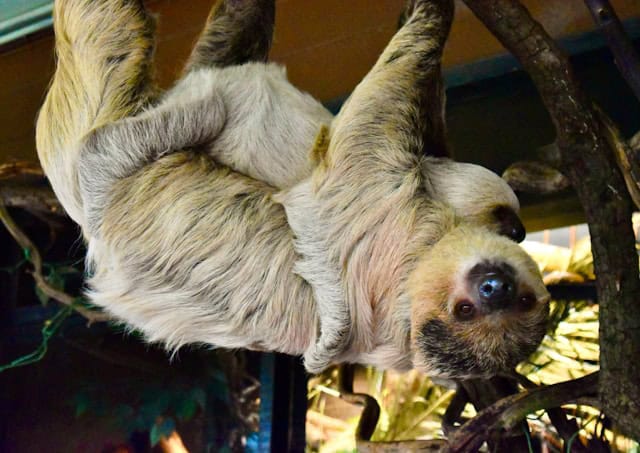
- Young sloths stay close to their mothers for two to four years.
- They are divided into two groups, three-toed sloths and two-toed sloths, divided into six species.
- The two-toed sloths have two fingers on their hands, are bigger, and need a larger territory. Also, its stomachs are supported by 46 ribs (23 pairs), more than any other mammal.
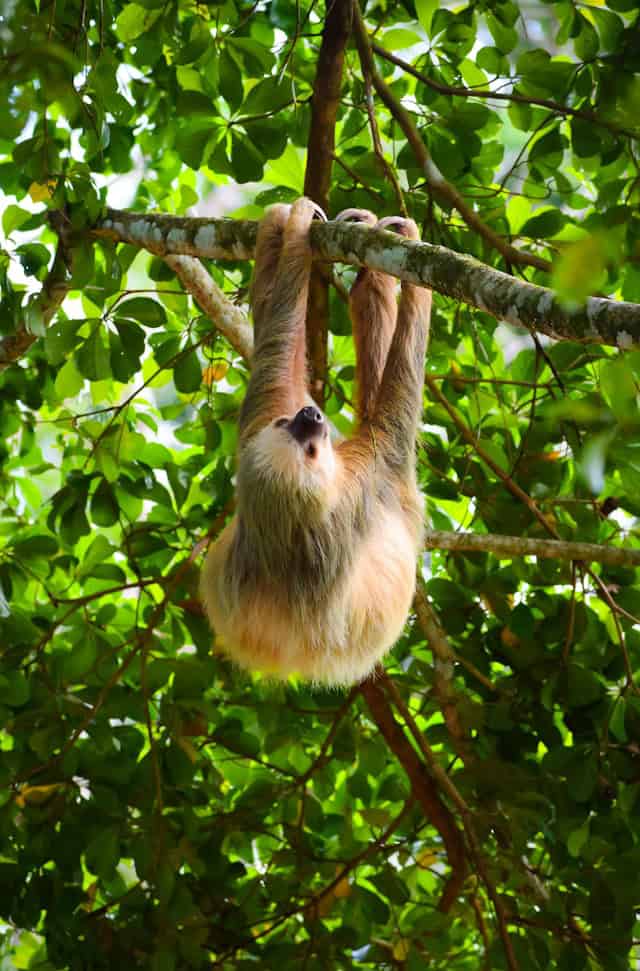
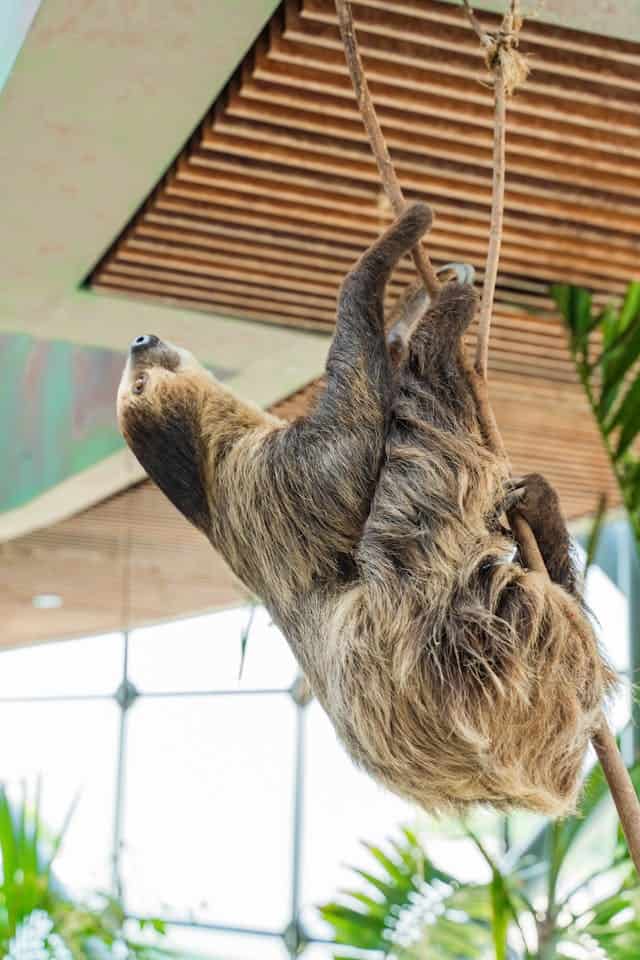
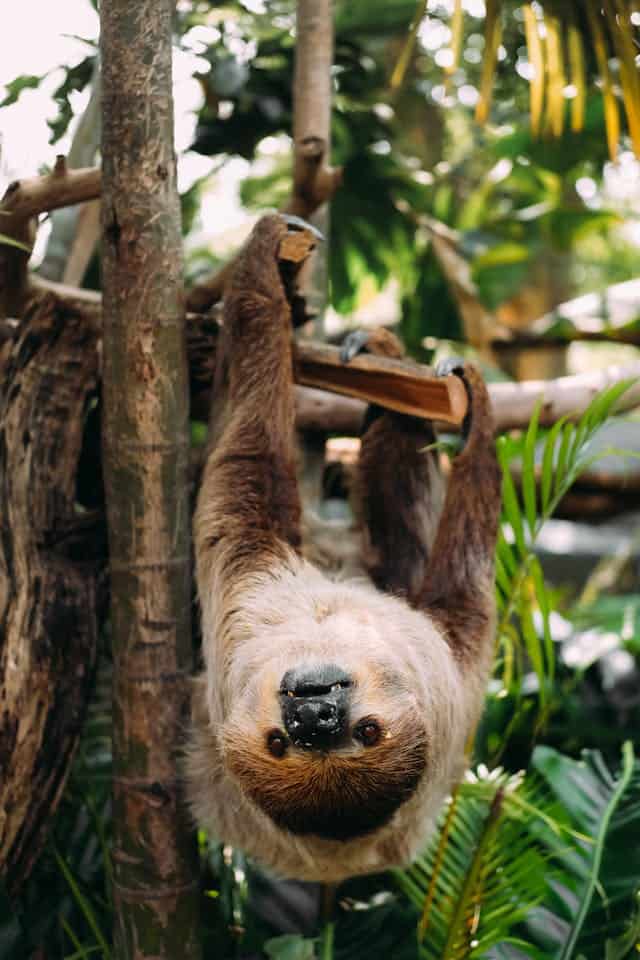
- The three-toed sloth has three fingers, is smaller, needs a smaller territory, and has nine vertebrae in its neck. Male three-fingered sloths have a distinctive orange and black stripe on their backs called a speculum.
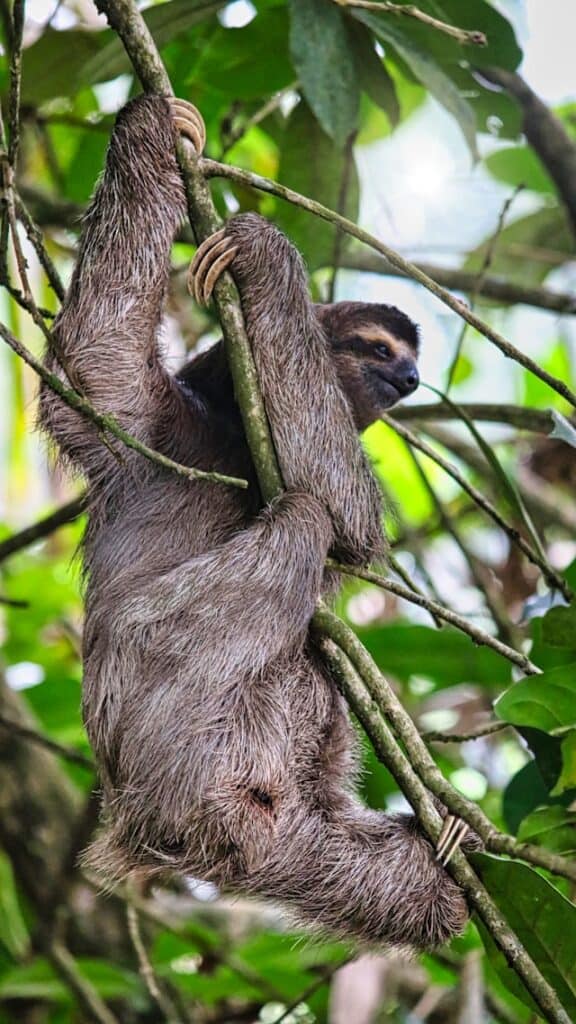
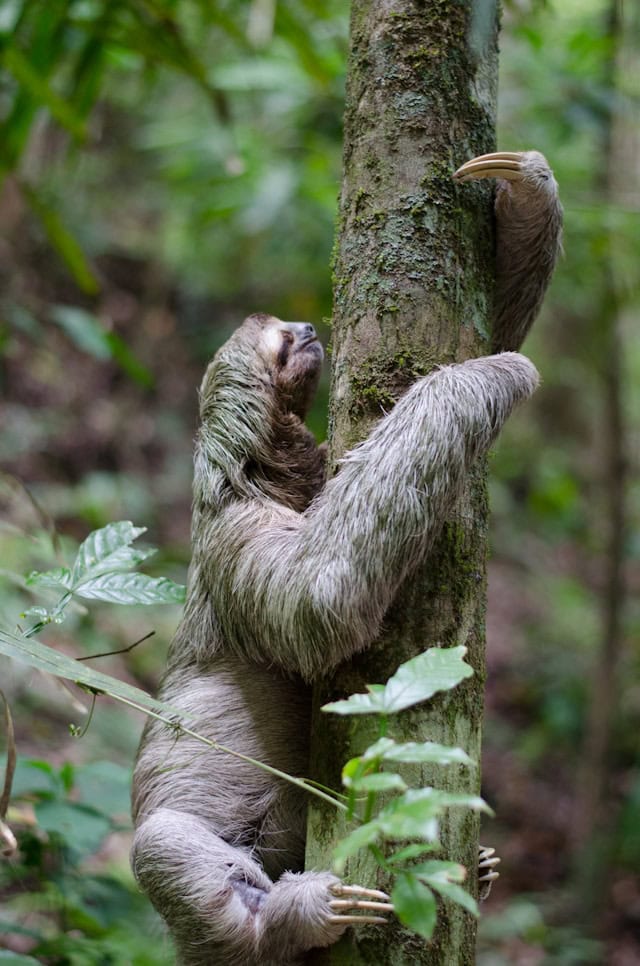
- They are also more docile than the two-toed ones.
- The sloths’ lifespan in the wild is unknown, and they don’t do well in captivity.
- They are an “umbrella” species. This means that protecting them and their habitat benefits many other species.
- They are facing severe threats mainly due to the illegal pet trade and loss of habitat, which force them to travel on power lines, get electrocuted, or get killed by vehicles or dogs.
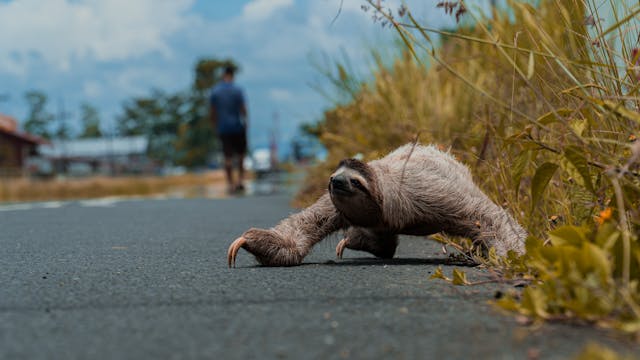
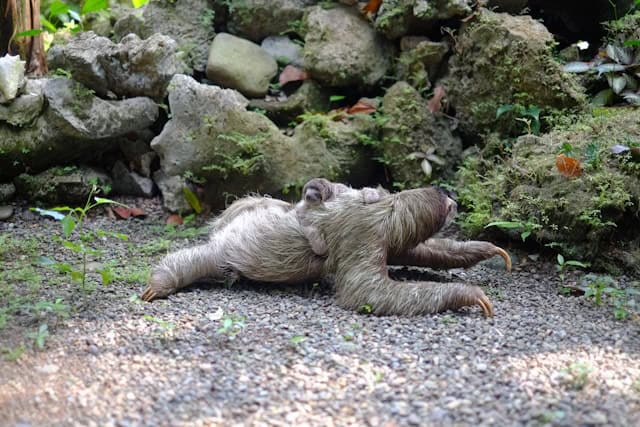
- The shortage of enough individuals has caused sloths to be born with genetic abnormalities, including malformed ears, missing fingers and toes, and albinism.
- According to the International Union for Conservation of Nature (IUCN) Red List, the pygmy three-toed sloth is critically endangered, and the maned three-toed sloth is endangered.
How to Celebrate International Sloth Day
- Educate Yourself and Then Others: Learn more about sloths so you can teach others about them. The World Wildlife Fund’s website is an excellent place to start.
- Plan a Field Trip to Your Local Zoo: Not all zoos have sloths because they don’t do well in captivity. Find out if your local zoo has sloths, and plan a visit with your preschoolers and their families to observe the sloths and learn more about them.
- Get Informed About Special Activities: Wildlife organizations and zoos host educational activities, presentations, and exhibitions for International Sloth Day. Find out if there are any plans where you live, and visit with your students, families, and friends.
- Show Videos About Sloths to Your Preschoolers: Children learn more when they use more senses; therefore, showing them real videos about sloths is an excellent way to teach them about this fascinating and rare mammal. Below are some you can use.
- Organize a Fundraiser: Donations to wildlife organizations such as the AIUNAU Foundation, The Sloth Conservation Foundation, The Sloth Institute, or other organizations protecting sloths provide the necessary funds to continue their work.
- Download and Share International Sloth Day Materials: The Sloth Conservation Foundation offers logos and images on its shared drive that you can download for free to create your SlothTober-themed content for social media.
- Promote the Sloth Shop: The Sloth Conservation Foundation and The Sloth Institute own online stores selling books, calendars, and toys to fund their work.
- Adopt a Sloth: The Sloth Conservation Foundation offers symbolic adoptions, which help them fund all of their conservation projects. Invite your preschoolers, family, and friends to do the same. If you work at a school, maybe you can promote a friendly competition to see which classroom adopts more sloths.
- Sponsor a Sloth Crossing: Helping to create safe passages for sloths will prevent them from getting killed while crossing from one area to the next. You can do it through the Sloth Conservation Foundation.
- Plant Sloth-friendly Trees: This will help regenerate sloths’ habitat. If you cannot do this in person, you can sponsor trees, and The Sloth Conservation Foundation will plant them for you.
- Observe Sloths in the Wild: If you travel to Costa Rica, you can visit Manuel Antonio National Park, where they can be seen.
Books About Sloths
Read books about Sloths to your kids to reinforce your lessons and instill in them the desire to help these amazing creatures as they grow older. Below are some good ones you can use. You can find them at your local library, in your used bookstore, and on Amazon by clicking on the titles and following my affiliate links for easy and fast access.
- Sloths: Fascinating Animal Facts for Kids by Tyler Grady teaches about the sloth’s habitat, diet, breeding, lifespan, behavior, and threats. It also uses beautiful color photography to make each animal come to life.
- All Things Sloths for Kids by Animal Reads is filled with amazing real-life images and combines fun with education to help kids learn about sloths.
- Sloths Don’t Run by Tori McGee uses rhyme to tell the story of two rainforest creatures who embark on an unlikely adventure – running The Great Rainforest Race. The pair proves that with hard work, they can do what seems impossible and learn the true meaning of courage.
- “Slowly, Slowly, Slowly,” said the Sloth by Eric Carle. This book uses dazzling collage illustrations to introduce readers to the exotic beauty of the Amazon rainforest and the many unusual animals living there.
- Bedtime for Baby Sloth by Danielle McLean is a sweet story about a baby sloth who doesn’t want to sleep.
- Sloan the Sloth Loves Being Different by Misty Black is a self-awareness story that helps children recognize and develop their unique talents and improve their self-worth.
- What is a Sloth? by Ginger Swift teaches about the adorably cute and sleepy tree-dwelling mammal, the sloth. The book uses vibrant pages filled with playful tropical rainforest animal friends and fun sloth facts.
- Hurry, Hurry, Little Sloth by Little Hippo Books invites children to follow Little Sloth through this beautifully illustrated board book as she moves at her own pace and discovers the wonders of not rushing through life.
- Epic Sloth Facts for Kids by Samuel J. Wilco contains facts, vivid imagery, and amusing sloth stories to grab your kid’s attention.
Pin It For Later
If you are in a rush and don’t have time to read the post and download the printable but want to save it later, pin it to one of your Pinterest boards.
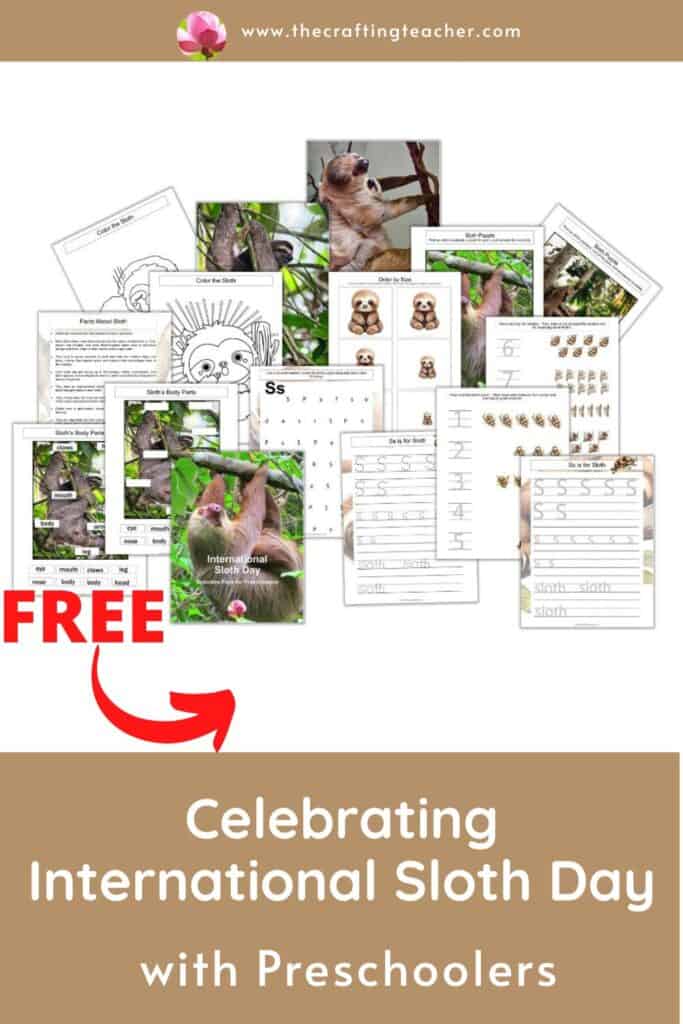
As educators and parents, let’s take our time to help raise awareness about the risk of extinction sloths face. We should also teach our preschoolers about them so they and future generations become defenders of this planet and its inhabitants for life.
I hope you enjoy these ideas and that they help you have fun with your preschoolers during the International Sloth Day celebration. To get the FREE pack, click on the link below and enter your information for an immediate download.
Be happy, safe, and creative. I wish you well.
Love,

P.D. Please let me know if any of these ideas worked for you or if you think I need to add or replace something. My goal is to help you in any way I can.



